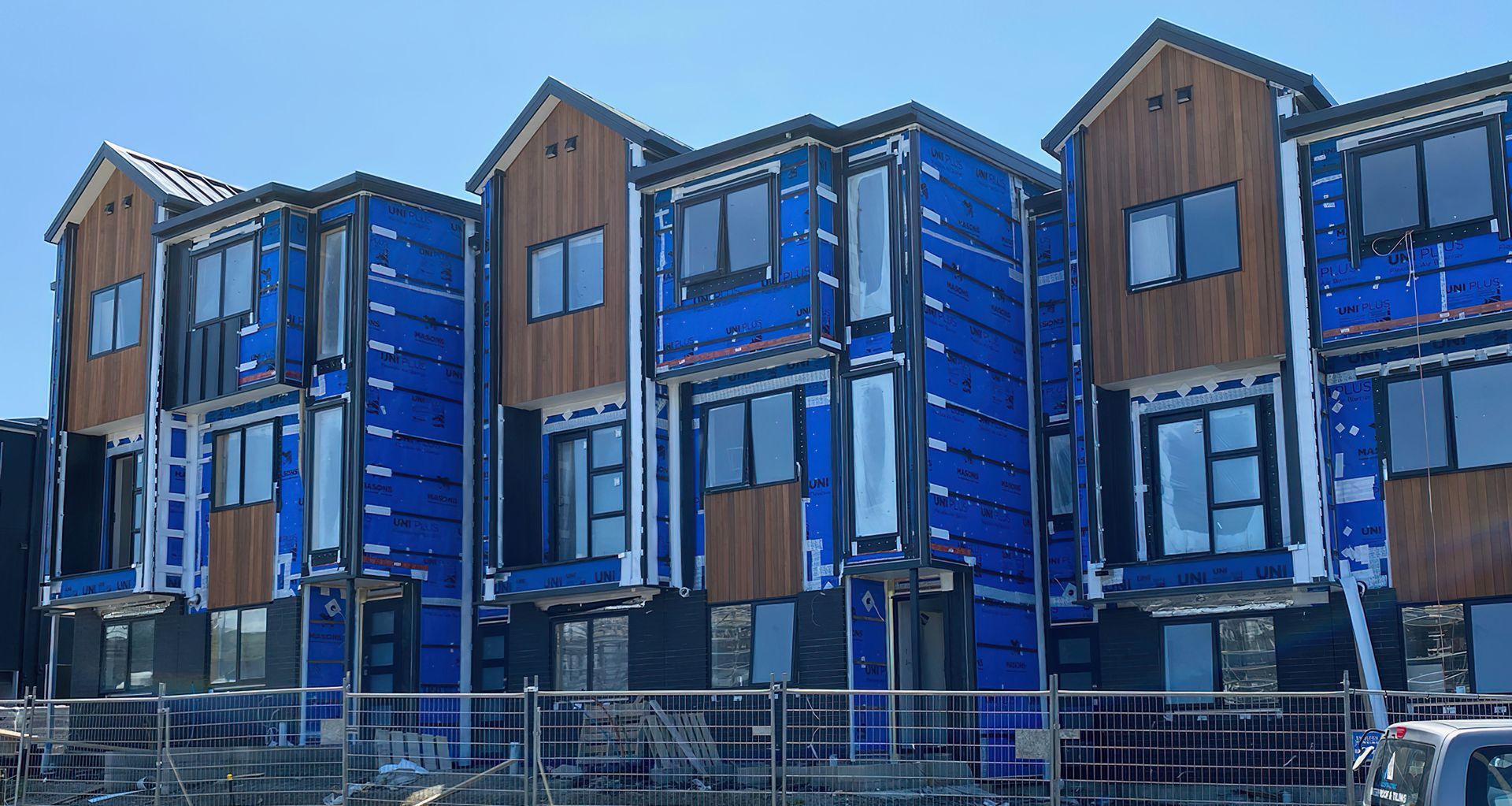How Modern Air Barriers Can Improve Building Moisture Performance
Written by
07 November 2022
•
4 min read

ArchiPro: What were the building challenges that necessitated the creation of Uni flexible air barriers?
Arthur Whitfield: Most of us foresaw the need for a product that would help get around some of the challenges the building industry was facing – cladding and skilled labour shortages; supply challenges with other air barriers; escalating costs; need to keep on schedule; and hitting progress payment milestones.
AP: What's the purpose of an underlay?
AW: The many purposes of a wall underlay is to establish a drainage plane behind the cladding. So I'm sure you're all familiar with the four Ds: deflection, drainage, drying, and the often forgotten D – diffusion. That drainage plane is very important. If water gets past the rain screen, or gets past the cladding (bulk water I'm talking about which might be driven by rain), it hits the underlay, and drains down and hopefully is allowed to either evaporate or drain out of the cavity.
An underlay is designed also to block the movement of air. Air will often carry moisture into the dry envelope, dampening the insulation and reducing its effectiveness. We want to keep our framing products – whether they be steel or timber – dry, because they perform best and have the longest life when they are dry.
AP: Tell me about the UNI system and how it works.
AW: UNI is a very rugged, flexible wall underlay system. It is a three-layer system, and it is made of polypropylene (sometimes you will see underlays like this referred to as polyolefin). Polypropylene is part of the polyolefin family of polymers. The outer layer is the blue layer that you see to the exterior of the underlay – it’s bright blue, and it's very strong. It also has the UV blockers or absorbers, and there's a small amount of fire retardant chemical in there, although this product does not claim to be fire retardant. Then we have the functional film, that is where the magic happens in terms of blocking bulk water, turning away liquid water, but allowing water vapour to pass through. The functional film also blocks the passage of air, which is one of the major reasons the product can be classified as an air barrier. The back of the fabric basically gives strength and bulk to the assembly.
AP: How does it work alongside your other products?
AW: When you use it together as an assembly with our products, primarily Mason's flashing tapes and penetration seals, and to a lesser extent brick ties and DPC, you can get up to 90 days of exposure to UV, when it's assembled correctly and within the scope of the CodeMark. This means work can continue inside –lining and insulating, gib stopping, possibly even undercoating. Some councils are a little bit different to others and what they will allow. I have even heard of people proceeding to tiling and wallpapering but that's probably a little extreme! We also have a product that allows 150 days of exposure to UV.
AP: Tell us about your UNI product range.
AW: So you've got UNI 90 days, which is not classified as fire retardant. You've got UNI PLUS, which is our fire retardant version. So if you're putting UNI onto an early childhood centre, or the fire engineer would like a fire retardant underlay for any reason, UNI PLUS is the one for you. UNI PRO gives you up to 150 days. So in terms of being able to carry on inside with no cladding in place, that gives you most of the benefit of a rigid air barrier. Now, of course it's not a rigid air-barrier, you don't get bracing, you don't get fire resistance, you don't get lock up security, but it is an incredibly effective way of protecting the framing.
Watch the webinar to learn more about the benefits of the UNI flexible air-barrier system or get in touch by filling out the form below.
